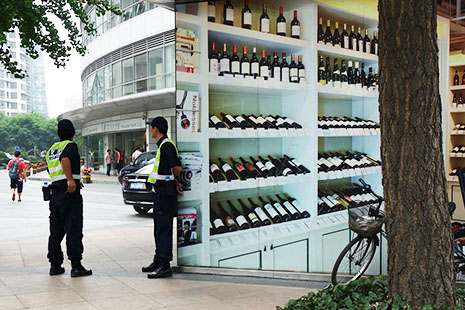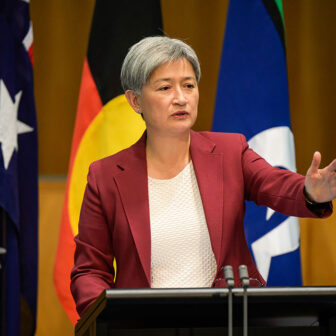WITH just over half of its 1.4 billion citizens living in cities, China is already home to the world’s largest urban population. A new campaign by premier Li Keqiang aims to create another 400 million urbanites over the next decade. Chinese technocrats hope these new city folk will reignite a slowing Chinese economy, boosting domestic consumption and services while reducing China’s reliance on global trade and investment.
Many of the people the planners have in mind already live in cities like Beijing, but as migrants without formal “urban residency” (or hukou in Chinese parlance) or access to public services and benefits. Urbanisation will be about settling migrants into permanent “communities” (shequ) with proper housing, healthcare, education and other public goods.
Urbanisation will also involve moving farmers and even nomads into newly created satellite cities like Lanzhou New City, which will eventually house over half a million new residents on 800 square kilometres of reclaimed land.
Inevitably, spatial dislocation on this scale will create new social problems and immense new challenges for China’s communist leaders, whose top priority remains staying in power by maintaining social stability and economic growth.
The lynchpin in the party-state’s attempt to remain on top of urbanisation is a poorly understood system of social management called gridisation (wanggehua).
Here party officials are literally mapping urban communities in order to create a high-tech matrix of segmentation, surveillance and social control. Human Rights Watch has already chronicled the development of this system in Tibet, but its reach and ambitions are far more pervasive.
The grid system originated in Beijing with the cityscape’s massive facelift in the lead-up to the 2008 Olympic Games. With the declining importance of enclosed, cell-like “work units” (danwei) and the rapid development of a commercial real estate market, gaps developed in the ability of local party and state officials to serve and regulate an increasingly mobile citizenry.
In the days of Mao, the danwei and party-controlled neighborhood watch committees not only provided basic social services but also ensured close control over individual activities and thoughts.
In massive urban centres like Beijing today, the lowest level of government is the sub-district or “street level” organ, which is responsible for tens of thousands of often faceless and shifting individuals.
The ten communities across the nearly three-square-kilometre Hujialou sub-district, for example, are home to 70,000 permanent residents and countless more non-permanent residents like me.
In 2004, the neighbouring district of Dongcheng began experimenting with a new system of urban management. Using the latest GIS mapping technologies, officials divided the twenty-five-square-kilometre district into 1652 grid-units (each roughly 10,000 square metres in size) and assigned a small team of party-led officials with primary responsibility for each unit.
Grid managers coordinate the work of “community workers” (like resident committees and security, maintenance and cleaning staff) and create a physical and digital link between local residents and government officials and services. They are responsible for gathering information and nipping potential problems in the bud, ensuring that “minor problems are resolved inside the grid, and larger ones are resolved inside the community or sub-district.”
In short, this new system seeks to reconstitute the grassroots surveillance of the Maoist past in a more fluid, market-driven landscape.
The gridisation of Beijing is slated for completion by year’s end, with other urban centres across China implementing similar plans. There is even talk of extending the method to the countryside in the form of a “rural grassroots grid system.”
As the name suggests, networking software and new computer technologies are central to the new system. In some locations, grid staff are already equipped with wireless, mobile devices and specialised networking software for coordinating activities. Physical observations are backed up with high-definition video cameras, adding millions of “digital eyeballs” capable of recording nearly every activity.
There are an estimated twenty to thirty million surveillance cameras across China, and security officials are attempting (with the help of Cisco Systems and other technology companies) to link these cameras and other monitoring tools into a centralised, interoperative and fully automated system of grid surveillance. With internet and phone usage already closely monitored, there is now little room to hide in China.
The grid system is still developing and manifests itself in radically different ways depending on the location and the type of community under management.
Approaching the two extremes are my own, expat community of Central Park in Beijing and the largely Uyghur migrant community of Saimachang in Ürümqi, Xinjiang.
CENTRAL Park is not your typical Beijing housing complex. Unlike the standard “gated communities,” anyone can wander in or drive through this sprawling compound of twenty-four high-rise towers and 19,000-odd apartments spread over ten hectares of prime Beijing real estate.
The complex’s grid management has been outsourced to Savills, one of the world’s leading property management companies, with residents paying a premium for privacy, security and “an exquisite lifestyle.”
Self-disciplining, middle-class consumers like myself pay Savills staff to keep any “problems” at bay, with a rotating team of six employees looking after our tower and its needs around the clock.
The party-state also controls foreigners through a computerised database of “alien registration.” Under Chinese law, I’m required to lodge my passport with the Hujialou police station each and every time I return to Central Park after a trip abroad, with a 500 renminbi (A$88) fine for failing to do so within twenty-four hours of arrival.
At every turn, people and machines guard my safety and maintain party control. A platoon of private security guards monitors entry-points and conducts regular patrols; tower staff oversee access in person and through computerised card entry.
As an extra layer of protection, nearly a thousand security cameras operate across Central Park. I counted twenty-five devices on my daily stroll across the compound: one right outside my flat door, another in the lift, three more in the tower lobby, and a whopping twenty on my way for coffee, with a further three keeping watch over my espresso.
In the far-western region of Xinjiang, meanwhile, the urban population is slated to increase by more than 15 per cent this decade. Like in China’s vast Tibetan regions, party officials in this restive minority region have been quick to embrace grid management, especially in the wake of the brutal Han–Uyghur race riot that left nearly 200 (mainly Han) residents dead in July 2009.
The region’s capital of Ürümqi is already home to more than 700,000 temporary migrants, many of them housed in ten-square-metre rooms in the sprawling Saimachang slum in the city’s south.
A 2011 survey found that 85 per cent of the nearly 5000 residents in East Saimachang are Uyghur migrants, with over one third from a single rural county near Kashgar.
As a part of Ürümqi’s grid-management system, this once shadowy and chaotic shantytown, which officials insist was one of the key sources of Uyghur violence against Han citizens in 2009, has now been fully mapped, reordered and garrisoned through a scheme known as “sealed-off, small community management.”
Saimachang’s numerous alleyways have been rejigged so that all traffic now flows through a single gated entrance that is patrolled 24/7. Grid officials carry out spot inspections to ensure that all residents are registered, and “hotel-style” check-in and -out procedures monitor movement through a smart-card system and numerous surveillance cameras.
Ürümqi recently installed more than 40,000 riot-proof, high-definition cameras across the city, and security officials now boast of “seamless” surveillance in sensitive areas like Saimachang.
Saimachang and Central Park are worlds apart. Yet, China’s new grid-management system seeks to apply the same optic of individualised, party-state control and surveillance.
With its ambitious scope and scale, this high-tech system of social control will ensure that the party-state continues to spend more money monitoring “enemies” within the grid rather than those over the border. •
James Leibold is a Senior Lecturer at La Trobe University in Melbourne, and currently on research leave in Beijing.




